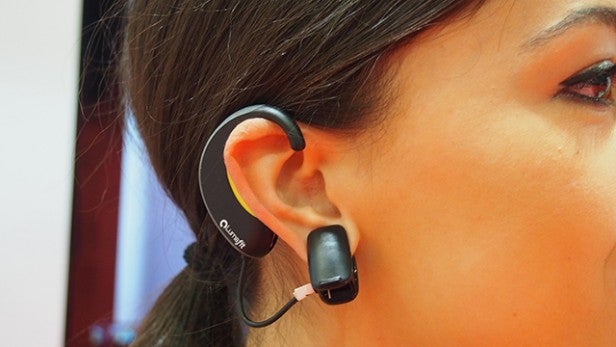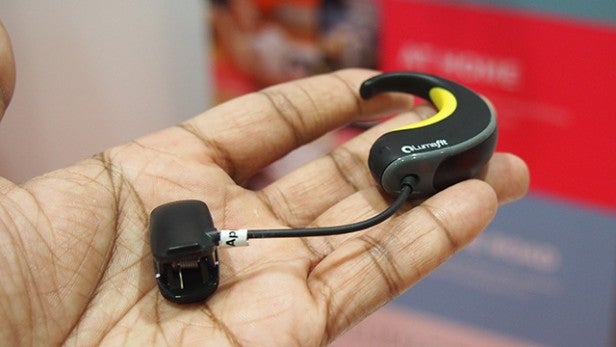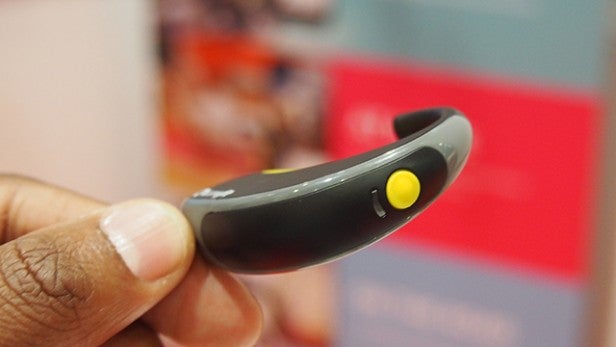Lumafit Review
Lumafit
Hands-on: The in-ear fitness tracker with a built-in interactive coach

Verdict
Hands-on with the Lumafit in-ear fitness tracker
Crowdfunding has been a major factor in the recent influx of fitness-focused wearables. It’s brought us great trackers like the heart-rate-monitoring Mio Alpha watches, the muscle-tracking Gymwatch and the wire-free Dash smart earphones.
The Lumafit reached its $60,000 goal on Kickstarter last year and now the fitness coach that sits on your ear is set to go on sale at the end of April. If you’re really eager, you can already pre-order for $129 (roughly £85) from the Lumafit website.
SEE ALSO: Wearable tech to look out for in 2015 and beyond
What the Irish company hopes will set the Lumafit apart from the likes of Jawbone and Fitbit is the ability to track motion even when you’re doing sit-ups, and help you to make corrections when you’re getting the movement and method all wrong.
The tracking is done from a single earhook-shaped, sweat-resistant sensor that sits around the top of the ear and has a small clip that’s secured on the earlobe. With the black and yellow design, it looks a lot like Jabra’s previous generation of sports headphones. It gives the impression of being big and cumbersome, despite weighing just 19g. I didn’t get to try it on, but I have my reservations about how secure or comfortable the small clip is going to be during an intense workout.

On the Lumafit is a single power button, an LED indicator for battery and syncing and an exposed Micro USB charging port. You’ll get 6 hours of use from the 100mAh battery, which is couple more hours than you can expect from the Jabra Pulse heart-rate-monitoring headphones.
Tracking movement is done via a three-axis accelerometer, which the company says is able to track head trajectory to sense the type of exercise you’re doing. Unfortunately this is all about tracking cardio exercise, so it won’t work with weight training. It also uses something called a Photoplethmograph. This is similar to the optical-based technology used in the Jabra Pulse headphones, for detecting changes in blood volume and relay heart-rate data to your smartphone in real time.

The companion app, which is available on iOS and Android, is where you can see the different activities logged, real-time progress, view demonstration videos to help perfect your form and test out interactive bootcamp exercises. You can share results on Facebook and the Fitbit-style badge system aims to keep you motivated by getting more into the trophy cabinet. The big difference here is that interactive coach element, which aims to spot issues with your exercise routine to make sure you’re getting the most out of your workout.
Data is synced to your iPhone or Android phone via Bluetooth 2.1, with a 30m range giving you some room to be away from the phone. There’s a decent amount of third-party app support as well, letting you sync workout data from the likes of RunKeeper, MyFitnessPal, Google Fit and Apple’s HealthKit.

Early Verdict
With fitness wearables, it’s impossible to cast judgement until actually taking them into the gym or out for a run. There’s definitely room for a fitness tracker that can make real-time improvements based on your exercise activity, so if the Lumafit’s coaching really works as advertised, it could be great for those who mostly ignore the weights in the gym.
I do have some reservations around the design, however. It doesn’t look very sleek and I’m concerned that the ear clip won’t stay put. As someone who likes listening to music during a workout, the fact that there’s been no mention of music playback support is also a worry.
However, it’s not outrageously priced and is one fitness wearable I’m definitely looking forward to spending more time with.


